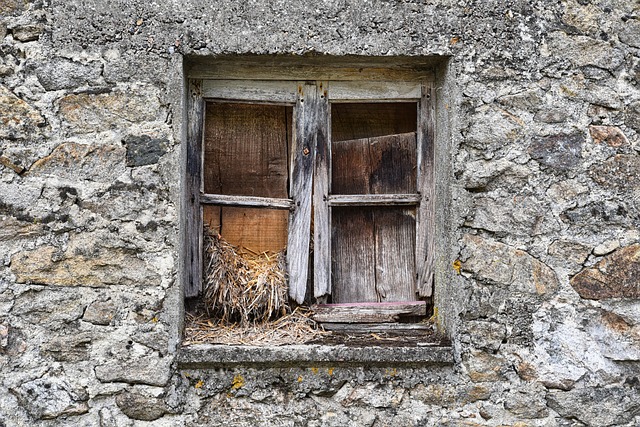Stem wall repair is a critical component of structural maintenance, addressing cracks caused by settling, foundation shifts, or environmental factors. These vertical load-bearing walls, often made of concrete or masonry, can develop cracks impacting building stability, especially in areas with seismic activity or harsh weather. Prompt repair using high-quality epoxy resins or other specialized compounds prevents further damage, enhances energy efficiency, and protects building value. Advanced techniques like automated crack sealing machines and modern epoxy injections improve efficiency and accuracy. Proper preparation, execution, and material selection ensure robust stem wall repairs that safeguard structural integrity, prevent water infiltration, and reduce long-term maintenance costs.
Internal crack sealing is a critical process ensuring the longevity and structural integrity of buildings, with a particular focus on stem walls. This comprehensive guide explores the intricacies of stem wall repair, addressing common crack causes, advanced sealing techniques, material selection, and step-by-step execution.
Understanding the vital role of stem wall integrity, this article delves into real-world applications, showcasing successful projects that highlight the benefits of prompt repair. By implementing effective internal crack sealing strategies, homeowners and builders can safeguard their properties against potential structural damage.
Understanding Internal Crack Sealing: A Comprehensive Overview

Internal crack sealing is a critical process in maintaining and repairing structural integrity, particularly focusing on stem wall repair. It involves identifying and sealing cracks within walls, foundations, or other architectural elements to prevent further damage and moisture intrusion. These internal cracks can arise from various factors like settling, foundation shifts, or environmental conditions, posing potential structural risks if left unaddressed.
Stem wall repair is a key aspect of this process, targeting the vertical walls that support the structure’s load-bearing components. By sealing these cracks, professional contractors can enhance the overall stability and longevity of a building. This method not only stops water penetration but also inhibits the growth of mold and mildew, which can be harmful to both structures and human health.
The Role of Stem Wall Repair in Structural Integrity

Stem Wall Repair plays a pivotal role in maintaining and enhancing the structural integrity of buildings, particularly in regions prone to seismic activity or extreme weather conditions. These walls, often constructed using concrete or masonry, form the foundation and support structure for many commercial and residential properties. Over time, cracks can develop due to various factors like settlement, ground movement, or aging, compromising the overall stability of the building.
Implementing effective stem wall repair techniques is essential to prevent further damage and ensure the long-term durability of the structure. By addressing these cracks promptly, professionals can stabilize the walls, restore structural integrity, and even enhance energy efficiency through improved insulation. This proactive approach not only safeguards the building’s value but also provides a safer living or working environment for occupants.
Identifying Common Causes of Cracks in Stem Walls

Stem walls, a critical component in many construction projects, are often subject to various stresses and environmental factors that can lead to cracks. Identifying the common causes of these cracks is an essential first step in implementing effective stem wall repair strategies. One primary cause is settlement, which occurs when the soil beneath the structure compacts over time, leading to uneven weight distribution and resulting in diagonal cracks. This phenomenon is particularly prevalent in areas with expansive clay soils, where moisture changes can significantly affect soil volume.
Another significant contributor is differential movement, where different parts of the stem wall expand or contract at varying rates due to temperature fluctuations or moisture content changes. This movement can cause cracks to appear horizontally, vertically, or diagonally, depending on the direction of the greatest strain. Structural defects, such as inadequate foundation design or improper construction techniques, can also lead to crack formation. These issues may result from poor soil preparation, incorrect concrete mixing, or subpar structural support, ultimately compromising the integrity of the stem wall and making it susceptible to cracks.
Advanced Techniques for Effective Internal Crack Sealing

In the realm of internal crack sealing, advanced techniques have emerged as game-changers in the field of construction and repair. One such innovative approach is the application of modern epoxy injections for stem wall repair. This method involves precisely injecting a specially formulated epoxy into cracks, where it expands and cures, providing an extremely strong and durable seal. The process ensures that even microscopic cracks are filled, preventing potential structural issues from escalating.
Additionally, advanced technology has led to the development of automated crack sealing machines. These tools offer increased efficiency and accuracy compared to manual methods. They can navigate complex labyrinthine cracks, ensuring every inch is sealed effectively. This technique is particularly beneficial for large-scale projects where consistency and speed are paramount. The use of such cutting-edge technology in internal crack sealing not only enhances the longevity of structures but also saves time and costs for contractors and property owners alike.
Choosing the Right Materials for Long-Lasting Repairs

When it comes to internal crack sealing, especially for stem wall repair, selecting the appropriate materials is paramount for long-lasting results. The right choice ensures structural integrity and prevents further damage. High-quality epoxy resins are a popular option due to their exceptional bonding strength and resistance to moisture and chemicals, making them ideal for repairing cracks in concrete or masonry walls.
Consider factors like crack width, depth, and the type of environment the wall is exposed to when choosing materials. For smaller, shallow cracks, a two-part epoxy kit might suffice, offering easy application and quick setting. In contrast, larger or deeper cracks may require more robust solutions, such as polyurethanic foam or specialized concrete repair compounds, which provide better flexibility and long-term durability.
Step-by-Step Guide to Executing Successful Internal Crack Sealings

Performing successful internal crack sealing is a meticulous process that requires careful preparation and precise execution. Begin by thoroughly inspecting the stem wall for cracks, measuring their depth and width. Next, gather your materials: a high-quality elastomeric sealant, a suitable brush or squeegee, and protective gear. Ensure the area is clean and free from debris to guarantee optimal adhesion.
Apply the sealant along the crack using even strokes, ensuring complete coverage. Allow the initial coat to dry according to the manufacturer’s instructions. If necessary, apply additional coats for deeper cracks, following the same procedure. Once the final coat is dry, inspect the sealed area for any visible gaps or imperfections. This meticulous approach guarantees a robust stem wall repair, enhancing structural integrity and preventing further damage.
Benefits and Advantages of Prompt Stem Wall Repair

Prompt stem wall repair offers numerous benefits and advantages for maintaining structural integrity and preserving the longevity of buildings, especially in regions prone to seismic activities or extreme weather conditions. By addressing cracks in stem walls immediately, property owners can prevent further damage and costly repairs down the line. Stem wall repair not only enhances the structural stability of a building but also improves its overall aesthetic appeal, ensuring it retains its value in the real estate market.
Moreover, timely intervention through stem wall repair can mitigate potential safety hazards associated with cracks. These cracks may indicate underlying issues like settlement, differential movement, or water infiltration, which could compromise the safety of occupants. Prompt action ensures that these problems are identified and rectified early on, providing a safer living environment and peace of mind for residents.
Real-World Applications: Case Studies of Successful Internal Crack Sealing Projects

Internal crack sealing is a versatile technique with numerous real-world applications, particularly in the realm of stem wall repair. Case studies across various industries highlight its effectiveness in addressing structural integrity issues and enhancing the longevity of buildings. For instance, in commercial construction, internal crack sealing has been instrumental in preventing water infiltration and moisture damage within concrete structures, ensuring the preservation of sensitive equipment and reducing maintenance costs over time.
A notable success story involves a historic warehouse undergoing renovation. Extensive internal crack sealing was implemented to mitigate structural failures caused by years of neglect. The project focused on stem wall repair, using advanced sealants to fill and prevent the propagation of cracks. The results were remarkable, with improved building stability, reduced moisture-related issues, and a significantly lower maintenance budget compared to a full reconstruction. This case study demonstrates the practical advantages and long-term benefits of internal crack sealing in challenging structural repair scenarios.
